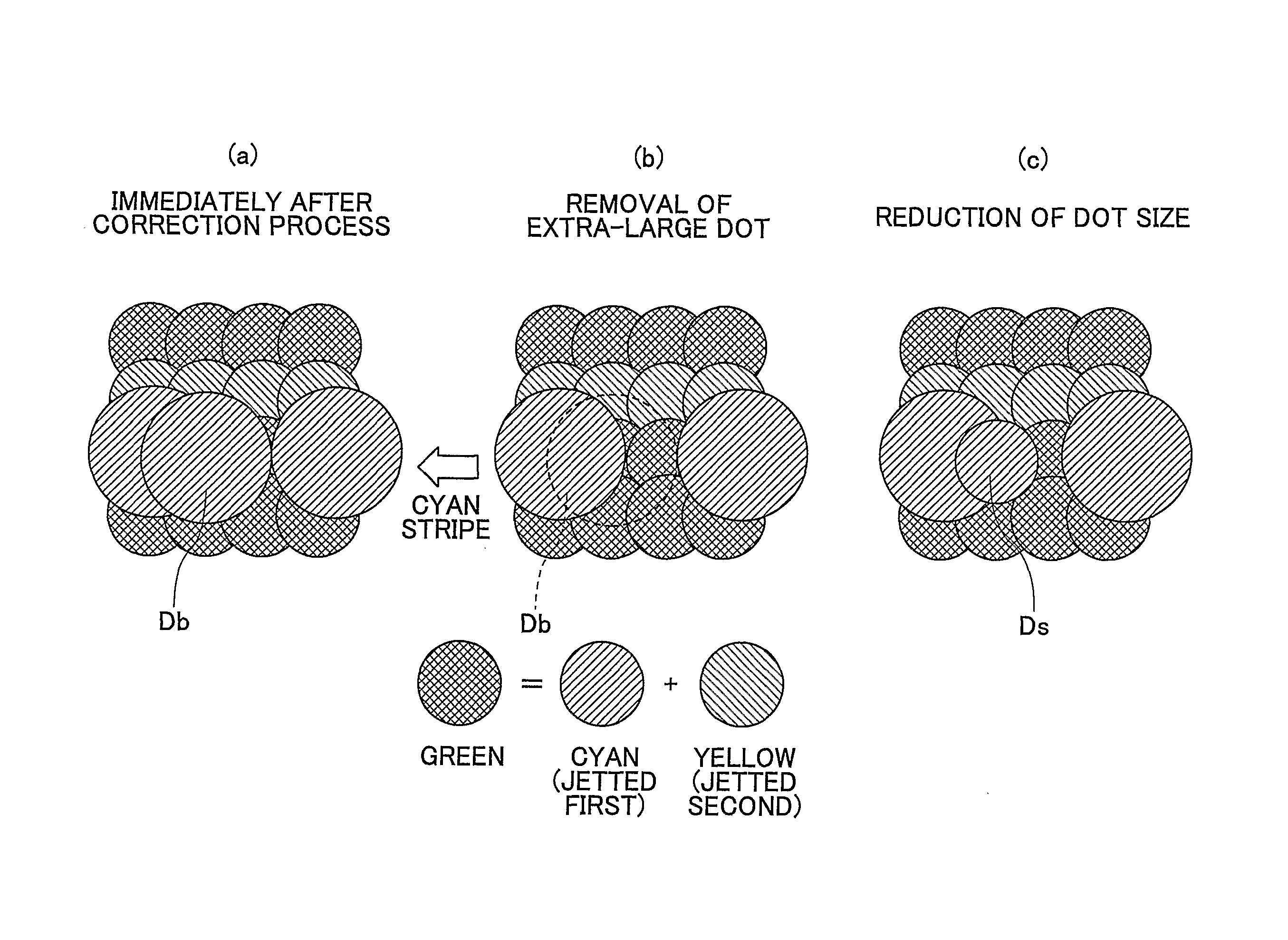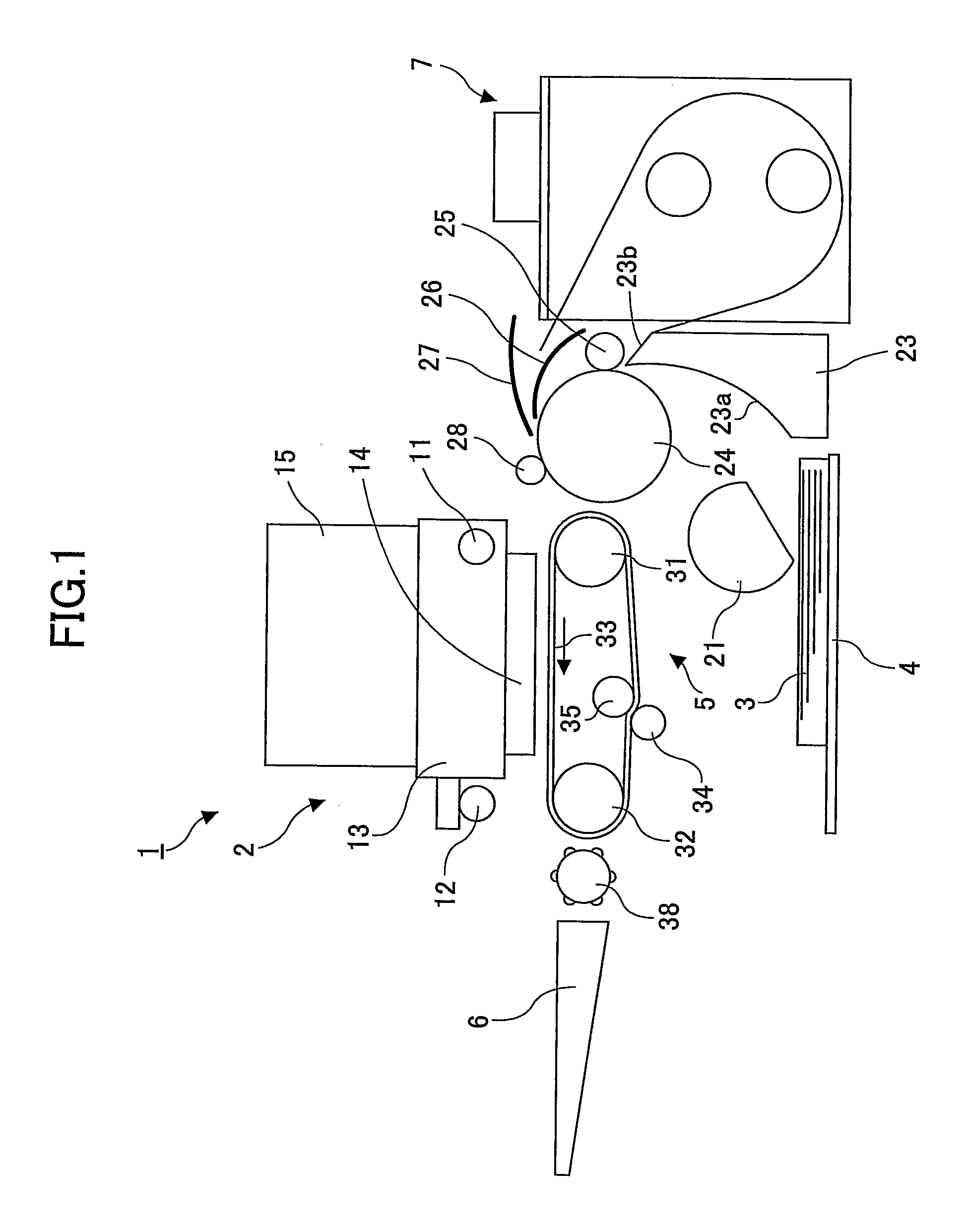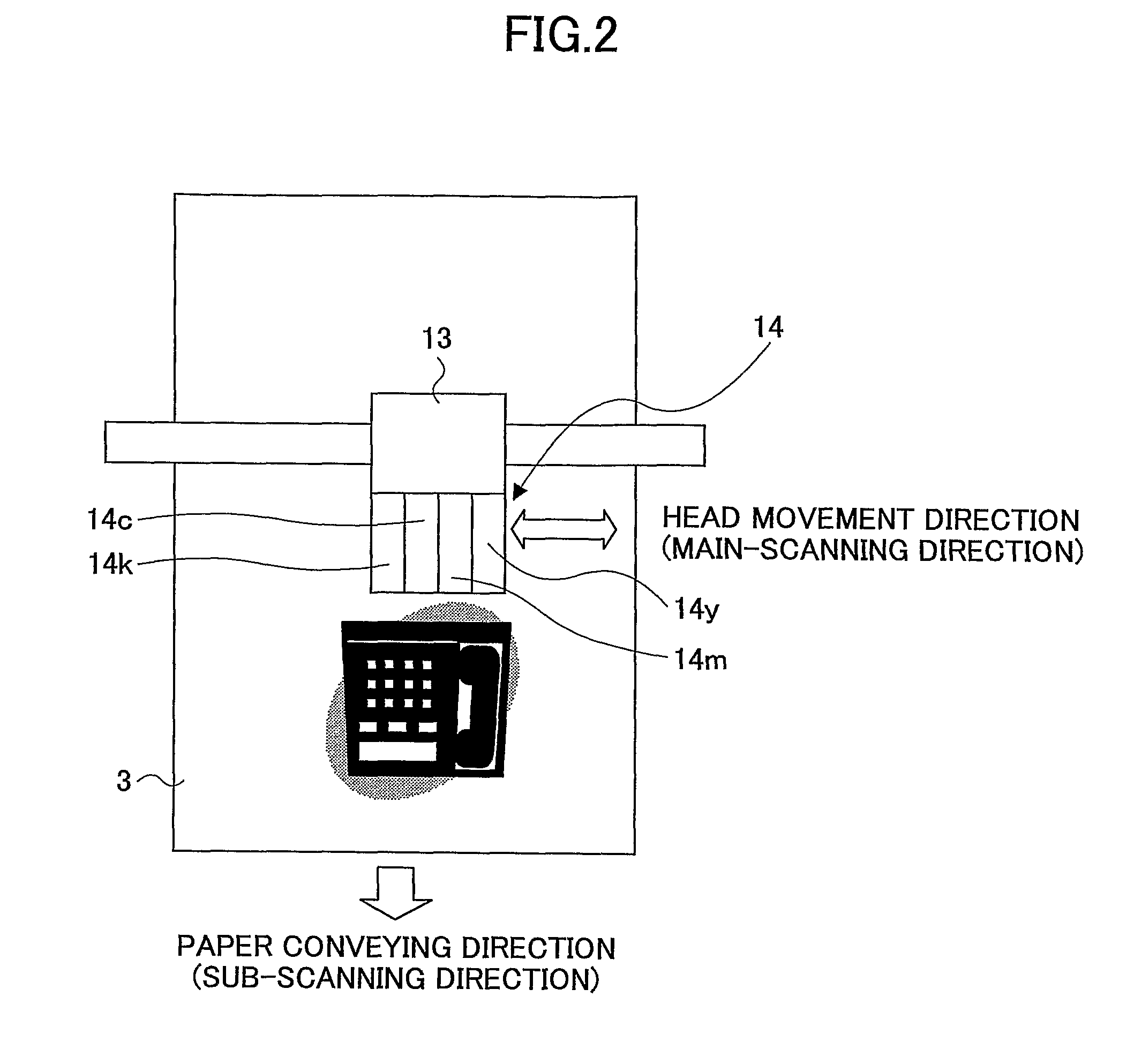Image processing method, image processing apparatus, image forming apparatus, image forming system, and storage medium
a technology of image processing and forming apparatus, applied in the direction of electrical apparatus, printing, pictoral communication, etc., can solve the problems of liquid-jet head inkjet failure, ink-jet head failure, ink-jet head failure, etc., to and reduce the droplet size
- Summary
- Abstract
- Description
- Claims
- Application Information
AI Technical Summary
Benefits of technology
Problems solved by technology
Method used
Image
Examples
Embodiment Construction
[0065]Preferred embodiments of the present invention are described below with reference to the accompanying drawings. An inkjet recording apparatus used as an example of an image forming apparatus according to an embodiment of the present invention is described below with reference to FIGS. 1 through 4. FIG. 1 is a schematic diagram of mechanical parts of the inkjet recording apparatus; FIG. 2 is a plan view of the mechanical parts; FIG. 3 is a perspective view of a head unit of the inkjet recording apparatus; and FIG. 4 is a schematic diagram of a conveyor belt of the inkjet recording apparatus.
[0066]The inkjet recording apparatus includes a main unit 1 including an image forming unit 2, and a paper-feed tray 4 disposed below the main unit 1 and capable of holding multiple recording media 3 (hereafter called paper 3). The paper 3 is fed from the paper-feed tray 4 into a conveying mechanism 5. The image forming unit 2 forms an image on the paper 3 being conveyed by the conveying mec...
PUM
 Login to View More
Login to View More Abstract
Description
Claims
Application Information
 Login to View More
Login to View More - R&D
- Intellectual Property
- Life Sciences
- Materials
- Tech Scout
- Unparalleled Data Quality
- Higher Quality Content
- 60% Fewer Hallucinations
Browse by: Latest US Patents, China's latest patents, Technical Efficacy Thesaurus, Application Domain, Technology Topic, Popular Technical Reports.
© 2025 PatSnap. All rights reserved.Legal|Privacy policy|Modern Slavery Act Transparency Statement|Sitemap|About US| Contact US: help@patsnap.com



